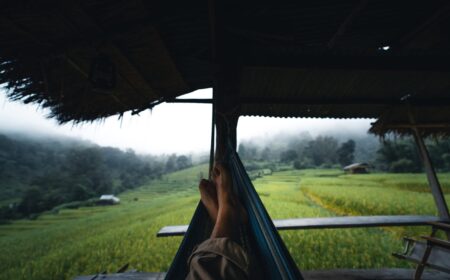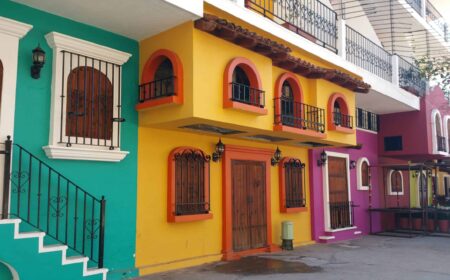Let’s be honest, fellow wanderers. Sometimes it feels like every hidden gem we uncover instantly gets tagged, geo-located, and flooded with identical artisan coffee shops and minimalist boutiques. Gentrification, that sleek, sometimes soulless wave of homogenization, washes over neighborhoods and even entire towns, leaving behind a polished shell that often loses the vibrant, messy soul we travelers initially sought. It’s the bittersweet reality of loving a place to death.
But take heart! Scattered across this incredible planet, like stubborn wildflowers pushing through cracks in the pavement, are destinations holding onto their authentic essence. Places where the rhythm of daily life hasn’t yet been drowned out by the curated playlist of mass tourism, where the local granny selling handmade snacks isn’t competing with a gourmet fusion taco stand, and where the heart of the community still beats strong and unmistakably itself.
These aren’t necessarily “undiscovered” – many are beloved – but they possess a resilience, an isolation, or a fiercely guarded culture that has, so far, kept the more jarring effects of rapid gentrification at bay. They are places to breathe deeply, connect genuinely, and remember why we fell in love with travel in the first place. Let’s wander into a few…

1. The Mountain Whispers of Svaneti, Georgia
High in the Caucasus Mountains, where the air is crisp and the peaks scrape the heavens, lies Svaneti. Forget the polished boulevards of Tbilisi (lovely as they are); Svaneti operates on a different wavelength, governed by ancient stone watchtowers (koshkebi) that have stood sentinel for centuries. Getting here isn’t effortless – winding roads test your resolve – but that very remoteness is its shield.
Life here feels woven from the land. You’ll see villagers haymaking with scythes on impossibly steep slopes, their movements echoing generations past. Stay in a traditional Svan stone house, warmed by a central hearth. Your hostess, likely named Nino or Manana, might serve you kubdari (spiced meat pies) and cha cha (the local firewater) with a warmth that needs no translation. The “tourist infrastructure”? It’s often the family converting a room, the village baker selling bread from his kitchen window, the shared taxis that rattle along the valley floor.
Gentrification hasn’t quite figured out how to scale these mountains and replicate the profound sense of history and community resilience. The towers aren’t photo ops for Instagrammable cafes; they’re still symbols of clan identity and protection. You come here not for luxury spas, but for soul-stirring hikes, conversations over shared meals, and the humbling feeling of being a guest in a landscape that time respects.

2. Soulful Stitches & Shared Plates in Oaxaca’s Central Valleys (Beyond the City)
Oaxaca City is magnificent, vibrant, and yes, feeling the pressures of popularity. But venture just an hour or so beyond into the surrounding valleys – Teotitlán del Valle, Santo Tomás Jalieza, San Bartolo Coyotepec – and you step into a world where indigenous Zapotec culture isn’t a performance; it’s the fabric of life.
In Teotitlán, the scent of wool and natural dyes (cochineal, indigo, moss) fills the air. Families like the Ruiz family in Casa Don Juan have been weaving intricate rugs (tapetes) for generations. Sit with them. Feel the wool, learn about the symbols passed down through dreams and stories. It’s not a factory tour; it’s an invitation into a living art form. Buy directly from the weaver in their home workshop, understanding the weeks of labor in every thread.
Down the road in Santo Tomás Jalieza, the rhythmic clack of backstrap looms creates stunning cotton textiles. Women gather under shade trees, fingers flying, sharing laughter and stories as they work. There’s no curated “artisan market” vibe imposed here; the craft is the market, integrated seamlessly into daily life. In San Bartolo, the black clay pottery of Doña Rosa’s descendants emerges from the earth itself, shaped by hands that know its secrets.
Gentrification struggles here because the economy is deeply rooted in land, tradition, and multi-generational family structures. Tourism exists, but it feels like a respectful exchange, not an invasion. You come to learn, to witness mastery, to share a simple meal of memelas and hot chocolate in a family courtyard, surrounded by the sounds of the village carrying on.

3. The Clan Jetties of Penang, Malaysia: Life on the Water’s Edge
George Town, Penang, is a UNESCO gem bursting with street art and incredible food. Parts of it are undeniably gentrifying. But step onto the Clan Jetties – particularly the less-touristy ones like the Lee Jetty or the Chew Jetty’s quieter ends – and you step back decades.
These are not museums, but vibrant, working-class communities built on stilts over the water. Originally settled by Chinese immigrant families (clans) in the 19th century, life here still revolves around the tides, family ties, and the rhythmic comings and goings of fishing boats. Wooden walkways creak underfoot, connecting brightly painted houses. Laundry flaps in the sea breeze. Kids scoot past on bikes. Elders sit on doorsteps, watching the world float by.
Yes, Chew Jetty has souvenir stalls, but wander deeper. Smell the salt air mixed with incense from tiny clan temples. Hear the clatter of woks from home kitchens. Witness the practicalities of life lived literally on the sea – repairing nets, tending to boats, navigating the walkways during high tide. The jetties resist full gentrification because they are fundamentally homes, not attractions. Residents are (rightfully) protective of their unique heritage and wary of becoming a theme park. Respectful observation, a quiet stroll, maybe buying a cold drink from a tiny family-run stall – that’s the way to experience this fragile, fascinating world.

4. Slow Currents & Smiling Faces on the Mekong’s 4,000 Islands (Si Phan Don), Laos
Deep in southern Laos, where the mighty Mekong River sprawls lazily across a vast archipelago, time adopts the languid pace of the water. Si Phan Don (Four Thousand Islands) is the antidote to frenzy. Don Det and Don Khon get the most visitors, but even here, compared to Thailand’s islands or Vietnam’s hotspots, the vibe is refreshingly unpretentious and slow.
Think basic bamboo bungalows with hammocks overlooking the river, not infinity pools. Think meals of fresh river fish and sticky rice served on rickety tables, not fusion tasting menus. Think bicycles as the primary transport on dusty paths, weaving past water buffalo and waving kids. The soundtrack? The putter of long-tail boats, birdsong, and the gentle flow of the Mekong.
The magic lies in the rhythm. Join locals at sunset to watch the elusive Irrawaddy dolphins surface. Help (if invited) with net-mending. Learn to weave a simple basket. Rent a kayak and get lost in the smaller, quieter channels where life unfolds on the riverbanks – bathing, fishing, washing clothes. Gentrification feels distant here partly due to Laos’ slower development pace, the focus on low-impact ecotourism, and the sheer, soporific power of the river itself. It encourages you to shed expectations, slow your heartbeat, and simply be present. The “luxury” here is the profound sense of peace and the genuine, unhurried smiles of the Lao people.

5. The Timeless Texture of Hoi An’s Neighborhoods (Beyond the Lanterns), Vietnam
Hoi An’s Ancient Town is beautiful, undeniably magical when the lanterns glow… and undeniably crowded, with creeping gentrification in its core. But Hoi An isn’t just the tourist quarter. Wander just a few blocks beyond the well-trodden paths, cross the bridge into neighborhoods like Cam Chau or Cam Nam, and discover a different Hoi An.
Here, the pace slows dramatically. You’ll find families who have lived here for generations, their lives still deeply connected to the Thu Bon River and the surrounding rice paddies. Cycle down lanes shaded by banana trees, past conical hats bobbing over green fields. Stop at a com ga (chicken rice) stall run by a woman who’s been perfecting her recipe for 40 years, her tiny plastic stools filled with locals, not tour groups.
Seek out the quieter craft villages nearby – not the big, tour-bus friendly ones, but smaller family operations. Watch a master carpenter crafting furniture using centuries-old techniques, or find the lady who still makes the intricate tofu skin (fu su) used in local dishes, a painstaking process done in her backyard. The resilience here comes from a deep-rooted community and an economy that still values traditional skills and agriculture alongside tourism. Gentrification nibbles at the edges, but the heart of daily Vietnamese life in these neighborhoods remains strong and welcoming to those who venture beyond the lantern glow.

Treading Gently: Our Responsibility in These Fragile Worlds
Finding these places is a gift. Preserving their magic is a responsibility. How do we visit without becoming the very force we lament?
- Listen More, Direct Less: Don’t arrive with demands. Observe local rhythms and adapt. Is the shop closed for siesta? Come back later. Embrace the pace.
- Spend Locally & Meaningfully: Eat at the family-run pho stall, not the international chain. Buy crafts directly from the maker. Stay in small, locally-owned guesthouses or homestays. Your money has power – direct it into the community.
- Respect is Non-Negotiable: Ask before taking photos of people, especially in intimate or sacred settings. Dress appropriately. Learn a few basic greetings in the local language. A little effort goes a massively long way.
- Embrace the “Imperfect”: Don’t expect western-style efficiency or amenities everywhere. The charm often lies in the quirks, the slower service, the unexpected detours. That’s the realness you came for.
- Be a Learner, Not Just a Consumer: Show genuine interest in traditions, crafts, and daily life. Ask questions respectfully. Be open to understanding different ways of being.
- Share Thoughtfully: Yes, we want others to experience these wonders. But consider how you share. Tagging exact locations of a fragile community or a secluded family spot on social media can inadvertently accelerate change. Be vague, focus on the experience, not the pin on the map.
The Whisper Before the Shout
These destinations won’t stay frozen in time forever. Change is inevitable, and often, development brings needed improvements for local residents. But there’s a profound difference between organic evolution driven by community needs and the rapid, often extractive, force of tourism-driven gentrification.
Seeking out places that still whisper their stories, rather than shout them through a curated megaphone, is about more than just a unique holiday. It’s about connecting with the enduring spirit of place, the resilience of culture, and the simple, profound beauty of lives lived differently. It’s a reminder that the heart of travel isn’t found in the most photogenic cafe, but in the shared smile over a steaming bowl of noodles, the rhythmic clack of a loom, the quiet dignity of a fisherman mending his net at dusk, or the awe of standing beneath mountains that have witnessed centuries pass.
So, go find those whispers. Listen closely. Tread lightly. And cherish the unrushed, authentic soul of the places that, for now, remain gloriously, resiliently, themselves. The world needs them. And so do we.






